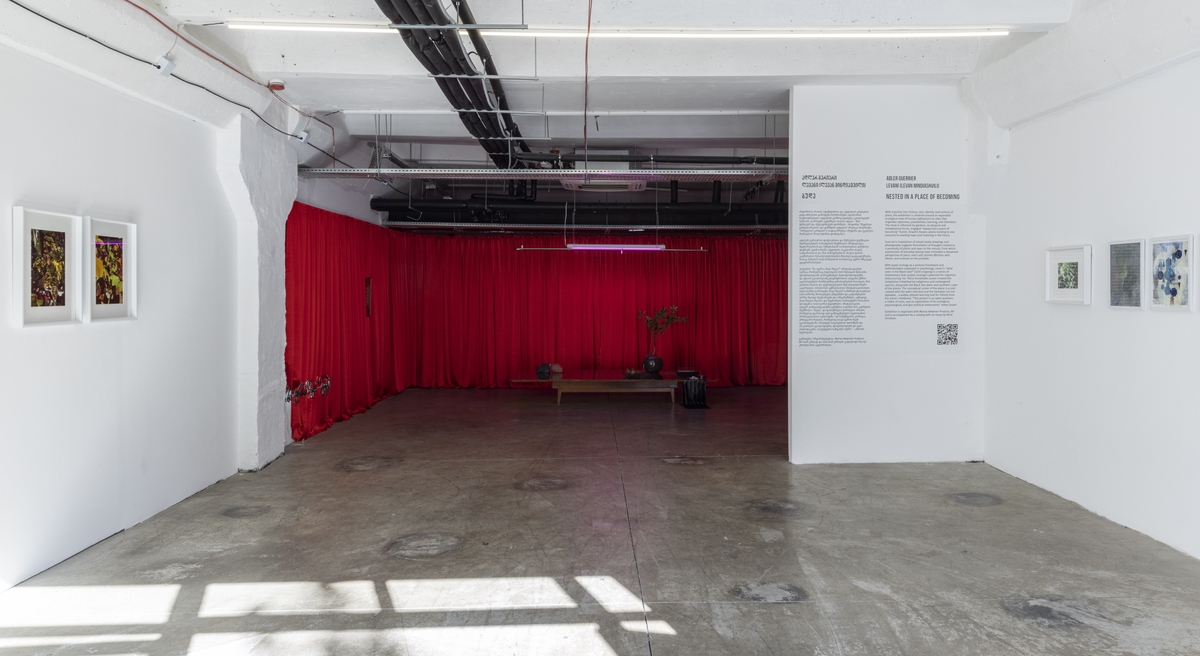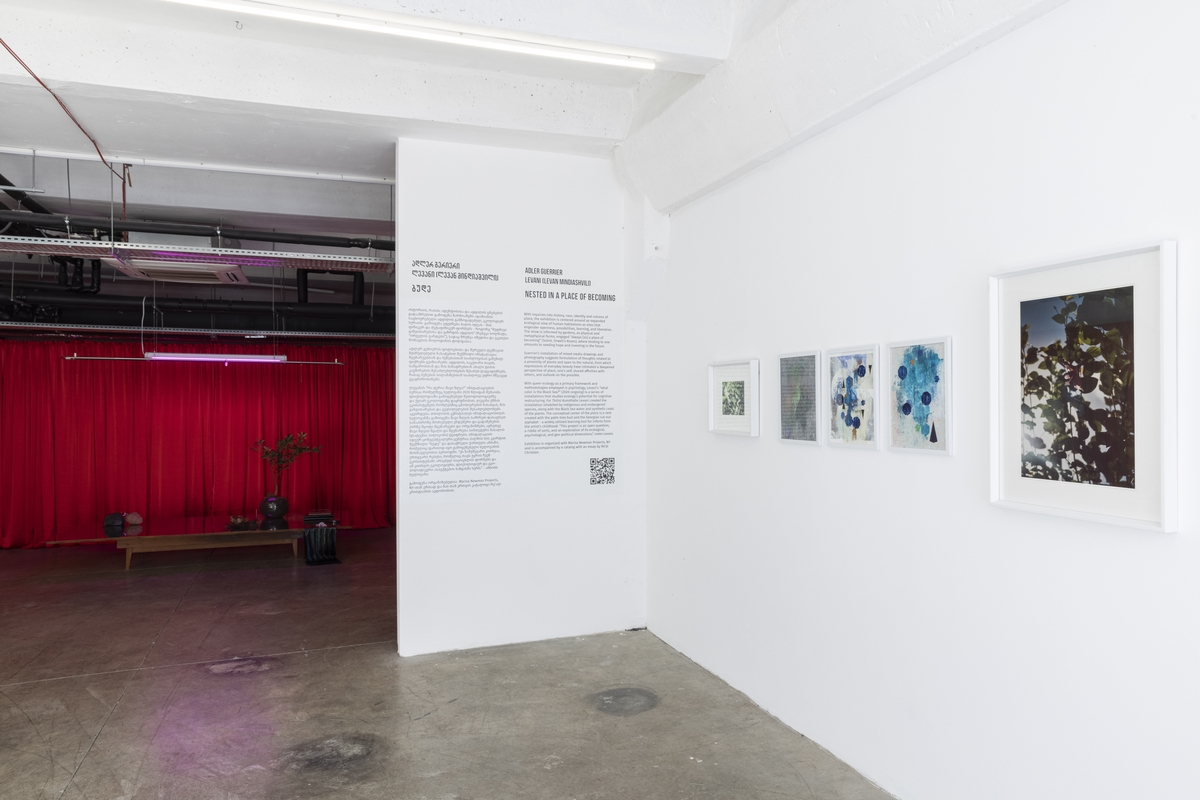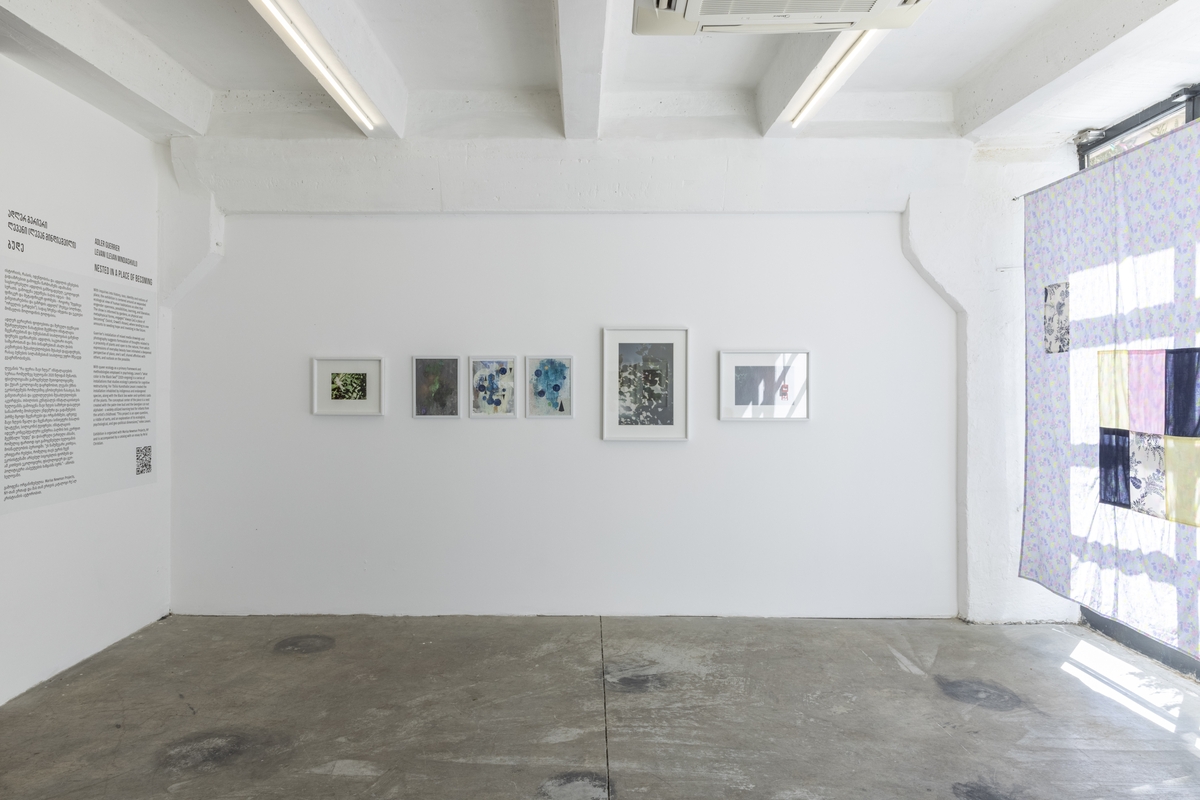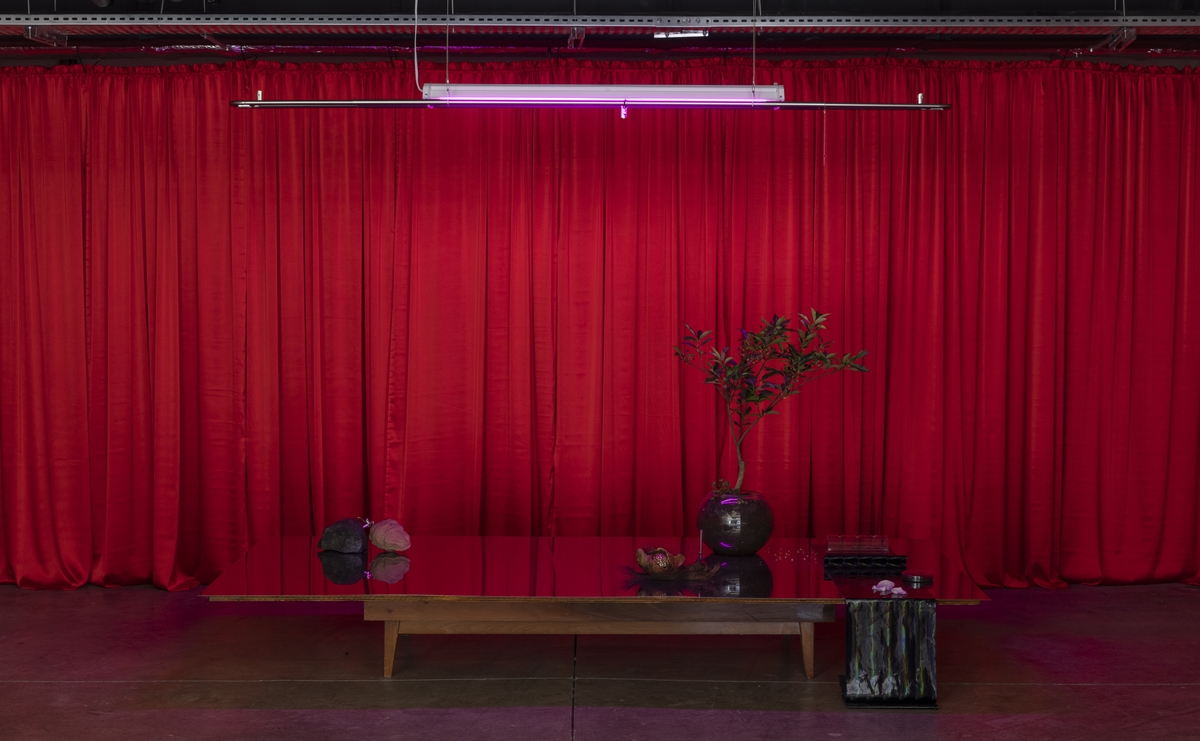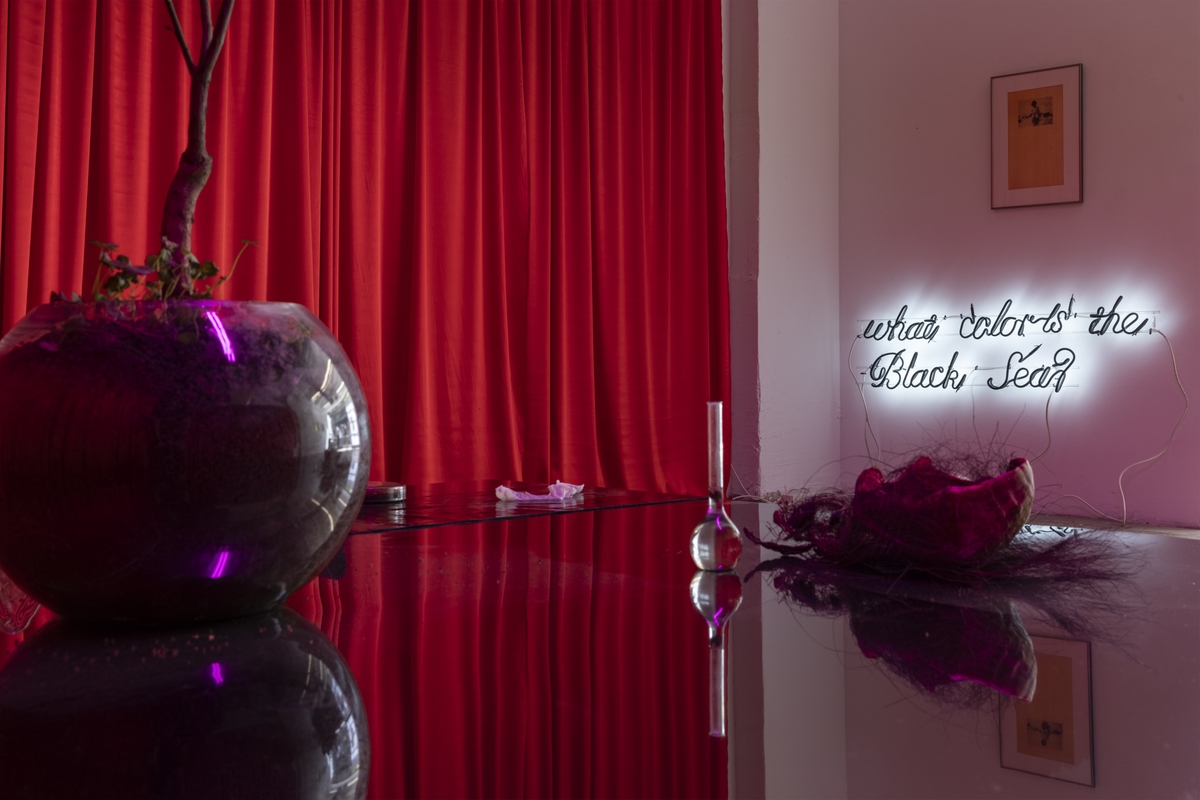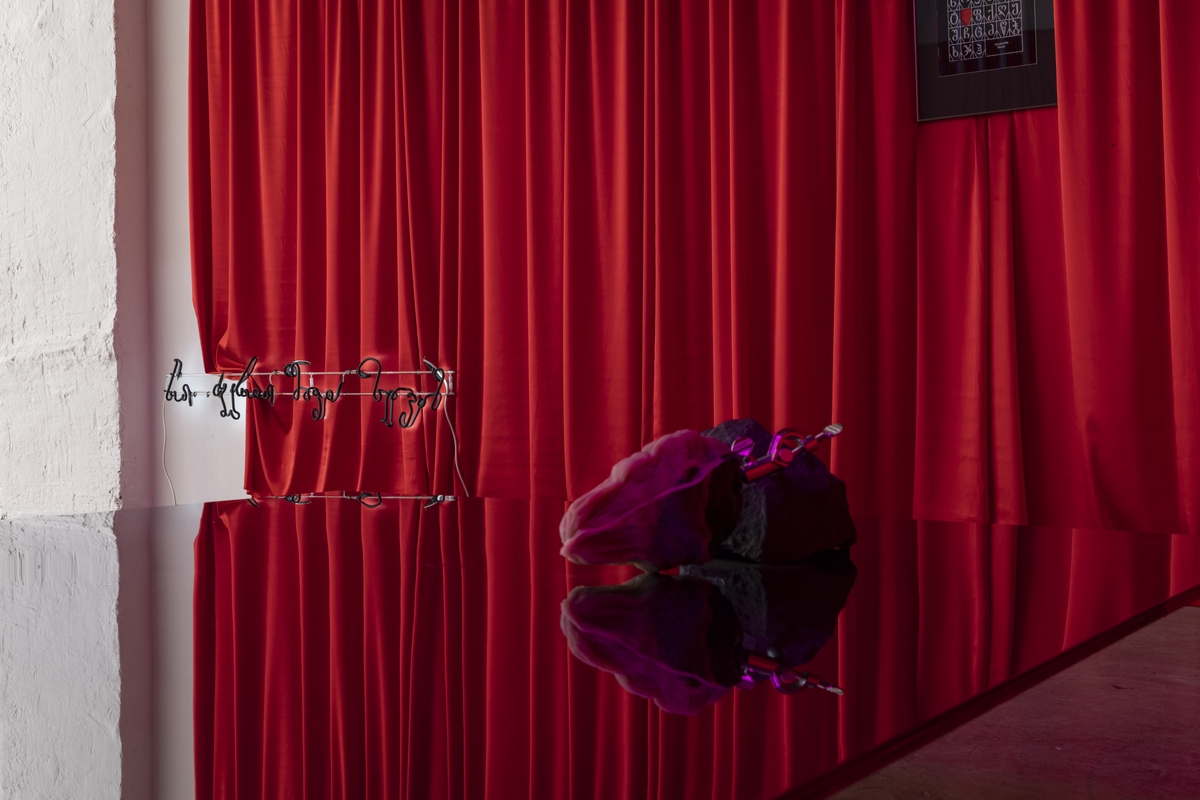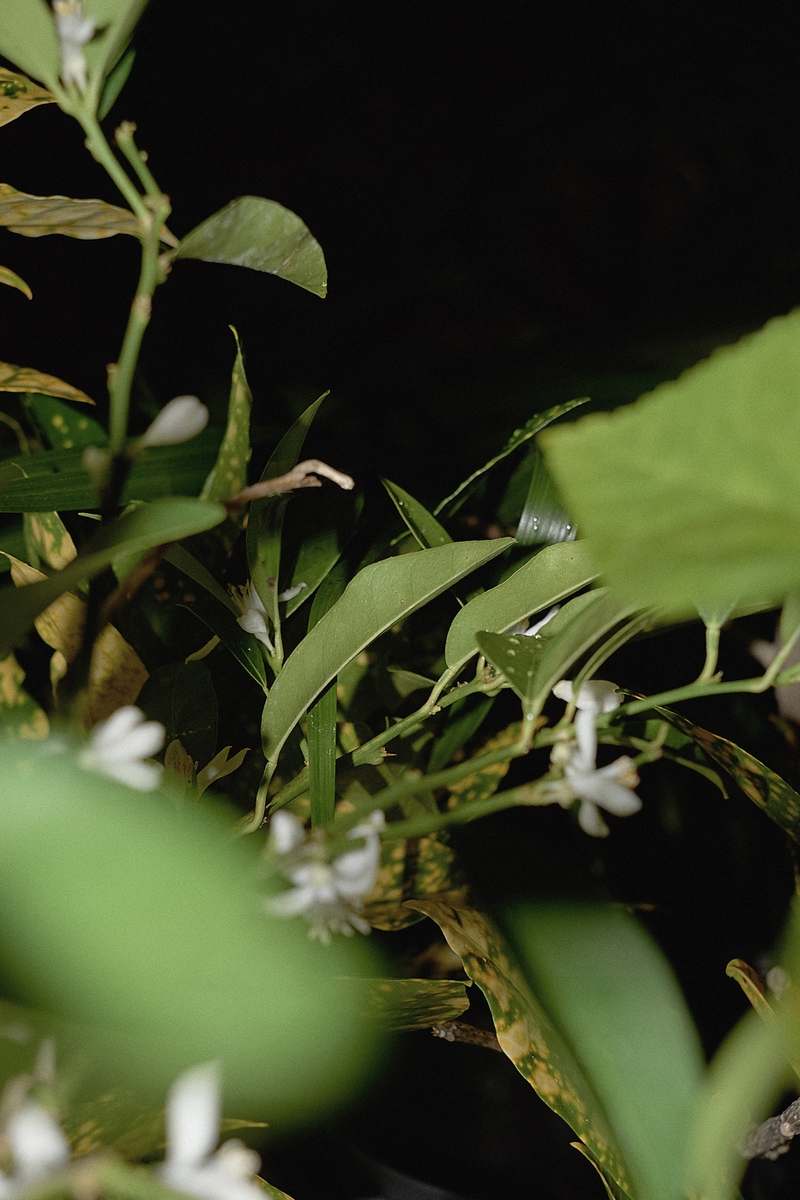Adler Guerrier
Levani (Levan Mindiashvili)
Nested in a Place of Becoming
September 22 – October 26, 2022
Gallery is open from Wednesday till Sunday 13:00-20:00 and by appointment
Exhibition address: Fabrika Tbilisi, Ninoshvili 8, Tbilisi, Georgia 0102
Kunsthalle Tbilisi is pleased to present a two-person exhibition, Nested in a Place of Becoming, by Adler Guerrier and Levani at Fabrika Tbilisi.
With inquiries into history, race, identity and notions of place, the exhibition is centered around an expanded ecological view of human habitations as sites that engender openness, possibilities, learning, and liberation. The show is informed by gardens, as physical and metaphysical forms, engaged ''always [as] a place of becoming'' (Solnit, Orwell's Roses), where tending to one amounts to seeding hope and investing in the future.
Guerrier's installation of mixed media drawings and photography suggests formulation of thoughts related to a proximity of plants and open to the natural, from which expressions of everyday beauty have intimated a deepened perspective of place, one's self, shared affinities with others, and outlook on the possible.
Titled ''what color is the Black Sea?'' (2021-ongoing), Levani’s installation foregrounds Ecology's potential for cognitive restructuring. An ecosystem of its own, the installation is inhabited by living plants and their casts in silicone and resin, growing horticulture lights, latex fabric imprinted with Georgian language, neon, and sound. Inquiring into the material, cosmological, and psychological dimensions of the human and nonhuman beyond identity categories, the installation collapses the binary dichotomies of living vs. non-living, natural vs. synthetic, material vs. spiritual. It offers an iconography of pluriversal belonging, empathy, solidarity, and care.
Exhibition is organized with Marisa Newman Projects, NY and is accompanied by a catalog with an essay by Re’al Christian.
Adler Guerrier is based in Miami, received a BFA at the New World School of the Arts. Guerrier has presented solo exhibitions at California African American Museum, Crisp-Ellert Art Museum, and Pérez Art Museum Miami. He has exhibited work at Studio Museum in Harlem, Tate Liverpool, Museum of African Diaspora, NSU Art Museum Fort Lauderdale, and Whitney Museum. His works can be found in public collections, including Walker Art Center, Institute of Contemporary Art Miami, Pérez Art Museum Miami, and Studio Museum in Harlem.
Levani (Levan Mindiashvili) is Tbilisi-born New York-based visual artist. They hold an MFA from Buenos Aires National University of Arts (IUNA) and a BFA from Tbilisi State Academy of Arts. They had solo exhibitions at Marisa Newman Projects NY, NARS Foundation, Georgian National Museum, Silk Museum, among others. Their work has been shown at The Bronx Museum of the Arts; Socrates Sculpture Park; Fridman Gallery, Elizabeth Foundation for Arts; National Art Museum of China; Tartu Art Museum; BRIC Biennial, Vol 3., and others. They are a recipient of the Artist Alliance Inc. LES Studio Program Fellowship, Peter S. Reed Foundation Grant, Socrates Sculpture Park Fellowship, NYFA Immigrant Artists Mentoring Program, AIM Fellowship the Bronx Museum of the Arts, Creative Times X Summit Grant, and FABLES grant from The National Endowments for Arts. Their work has been reviewed in Frieze, Art in America, ArtAsiaPacific, The Brooklyn Rail, Art Papers, The Art Newspaper, Pin-UP Magazine, OSMOS, and others. Levani's work is in public collections of the National Art Museum of China, Beijing; Georgian National Museum, Mestia; and Tbilisi Silk Museum, Georgia.
Re'al Christian is a writer, editor, and art historian based in New York. Her work explores issues related to identity, diasporas, media, and materiality. Her essays, interviews, and criticism have appeared in Art in America, BOMB Magazine, The Brooklyn Rail, and ART PAPERS, where she is a Contributing Editor. She has written catalogue and exhibition texts for CUE Art Foundation, DC Moore Gallery, Sikkema Jenkins & Co., and Performa. As a graduate curatorial fellow at the Hunter College Art Galleries, she worked on the exhibitions The Black Index (2020–22) and Life as Activity: David Lamelas (2021), as well as their accompanying publications. She curated the exhibition Steven Anthony Johnson II: Getting Blood from Stone at ISCP (2022), and The earth leaked red ochre (2022) at Miriam Gallery with accompanying catalogue. Currently, Christian is the Assistant Director of Editorial Initiatives at the Vera List Center for Art and Politics at The New School.
On Becoming
By Re’al Christian
“Because a garden is always a place of becoming, to make and tend one is a gesture of hope, that these seeds planted will sprout and grow, this tree will bear fruit, that spring will come, and so, probably, will some kind of harvest. It’s an activity deeply invested in the future.” —Rebecca Solnit, Orwell's Roses
Nested in a Place of Becoming resides in an interval between binary systems—material and immaterial, human and nonhuman, synthetic and organic, visible and invisible. This is the space of the other, a gap in-between, within interstices, within times, slipping between objectivities to exist. Hybridization becomes antithetical to a particular or prescribed way of being. As a means of defining the self—not as the other but as (an)other, always in flux and never defined—the hybrid body rests at the precipice of definability and opacity. “Becoming” alludes to a state of movement, a gerund that negates fixability, stillness, knowability. “Becoming” is unfixed, unbordered, unboundaried—a state of being between being, not a here and now, but an “elsewhere, within here.”
Adler Guerrier’s plant-filled vignettes revolve around a still point—a valence of energies captured within a unique ecosystem. The photographs are taken in the artist’s own backyard in Miami, but the focus is not the garden itself, not in its entirety, but the happenings unfolding within it. In closely cropped frames, these myriad species blend together, attract one another, and drift between light and dark, spatially uncertain and optically intimate. In works such as Untitled (At the still point of mottled formations and a scruple of compassion) (2022) and Untitled (Ode to an indispensable, neat, and useful place/At the still point of the turning world) (2022), each plant interlaces to form red, green, and golden tapestries, framed in such a way that facilitates their adjacency. From this vantage point, we’re transported into the garden, not above the plants but alongside them, building, as Guerrier describes it, solidarity through proximity.
In many ways, Guerrier, born in Port-au-Prince, Haiti, undermines a colonial desire to capture and typologically define a subject, a desire historically imbued into photographic media. His Untitled mixed media collages (2022) further abstract the subject into geometric constellations; his fabric piece delves into a formal exploration, alluding to domestic settings while focusing on the interaction of color, demonstrating the ways in which the simplest of forms can welcome the most beautiful encounters.
By reorienting our subjectivities and spatial environments, the artist alludes to what is happening just outside of the frame, revealing the place of image-making. The garden becomes a place of embracing the possibility of other forms of existence, of being, of consciousness. For diasporic people, this multiplicity allows us to place ourselves next to and within the histories of others that came before us. A formative place may be literal or figurative, but it represents its own space of becoming or coming to a here-now: acknowledging a past that we do not know, that is rooted elsewhere, but that carry we with us.
Levani’s installation Birth holds space for intimacies that are both physical and spiritual, bringing our attention to the gaps between beings to consider their consilience. Conjuring the feeling of being held within a bodily vessel, the installation envelops the viewer within undulating red curtains and soft pink light, eliciting an internal organ of unknown origin, consciousness, or host.
At the center of the space, four objects sit on a modern Soviet mirrored stainless-steel tabletop, seeming to float on a pool of still, black water. Around the periphery of the room, neon signage, fluorescent horticulture lights, palm tree buds, laboratory equipment, a Georgian alphabet book, burnt wood, and items collected along various coastlines form a unique garden of the artist’s own making. Each sculpture on the table corresponds to a Georgian letter, suggesting each object’s meaning and alluding to a different stage of becoming:
შ (შეჯვარება) Mating
დ (დაბადება) Birth
ც (ცირკულაცია) Circulation
ე (ეპისტემოლოგია) Epistemology
A pair of blacked-out white neon sculptures, რა ფერია შავი ზღვა? and what Color is the Black Sea?, present an evolving proposition for the artist. The question, which might appear rhetorical, asks viewers to interrogate their fundamental understanding of ecological markers in the region. Posed as a luminescent riddle, it invites us to ponder what ambiguities and conceptual richness lies between blackness, darkness, and light.
Levani looks to the smallest elements to understand the whole of their parts—the individual morphemes or letters used to form a language, or the strings of meta-code that build complex algorithms. In doing so, the artist deconstructs the basic building blocks of creating new epistemologies, hacking into preconceived systems of knowledge to consider the parts above the whole. Ultimately, they question what it is to be human, where the boundaries between the human and nonhuman become porous and fluid, and how we might engender and envision new modes of nurturance, intimacy, longing, and care in seeking out these interspecies connections.
Within Guerrier and Levani’s practices, the garden is a metaphor for conscious cultivation. In drawing upon ecological connections, the artists occupy a similar space of dwelling,
reflecting on the ways in which the garden mirrors society at large as a microcosm for cohabitating in a common space, for taking root in new soil. Within this exhibition, the artists invite us to question our positionality alongside them: How does one grow roots when the soil is infertile, arid, uninhabitable, unwelcoming, or unforgiving? How does one define a sense of place as a refugee, an immigrant, an other?
Kunsthalle Tbilisi plays host to these evocations. In the garden, a new plurality emerges: “I am not only here-now,” but in a constant state of becoming, of growth.
[1] Trinh T. Minh-ha, Elsewhere, Within Here: Immigration, Refugeeism and the Boundary Event (Abingdon: Routledge, 2010).
For further information please contact info@kunsthalletbilisi.com or Tel.: +995 599331157


